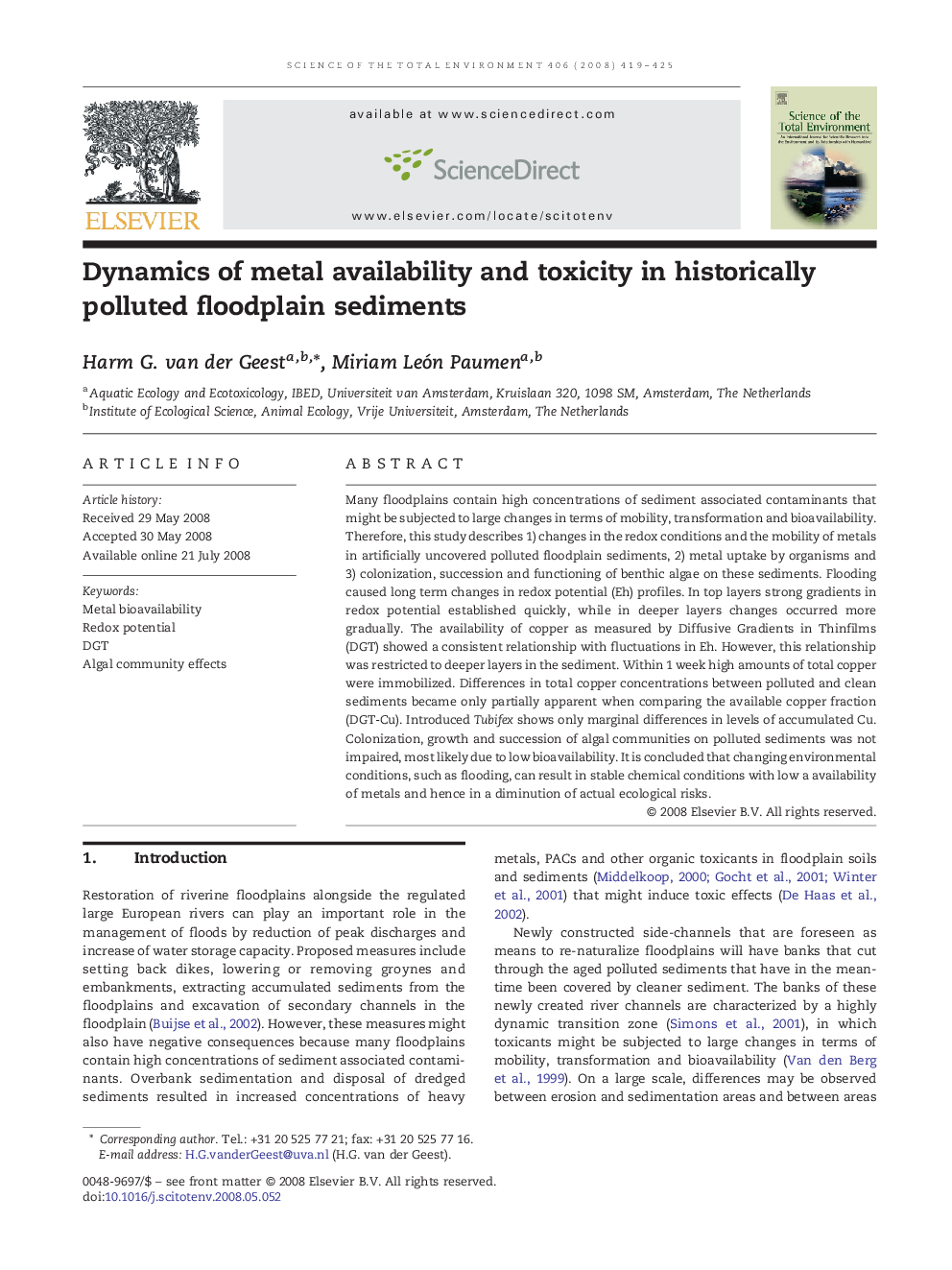| Article ID | Journal | Published Year | Pages | File Type |
|---|---|---|---|---|
| 4432237 | Science of The Total Environment | 2008 | 7 Pages |
Many floodplains contain high concentrations of sediment associated contaminants that might be subjected to large changes in terms of mobility, transformation and bioavailability. Therefore, this study describes 1) changes in the redox conditions and the mobility of metals in artificially uncovered polluted floodplain sediments, 2) metal uptake by organisms and 3) colonization, succession and functioning of benthic algae on these sediments. Flooding caused long term changes in redox potential (Eh) profiles. In top layers strong gradients in redox potential established quickly, while in deeper layers changes occurred more gradually. The availability of copper as measured by Diffusive Gradients in Thinfilms (DGT) showed a consistent relationship with fluctuations in Eh. However, this relationship was restricted to deeper layers in the sediment. Within 1 week high amounts of total copper were immobilized. Differences in total copper concentrations between polluted and clean sediments became only partially apparent when comparing the available copper fraction (DGT-Cu). Introduced Tubifex shows only marginal differences in levels of accumulated Cu. Colonization, growth and succession of algal communities on polluted sediments was not impaired, most likely due to low bioavailability. It is concluded that changing environmental conditions, such as flooding, can result in stable chemical conditions with low a availability of metals and hence in a diminution of actual ecological risks.
